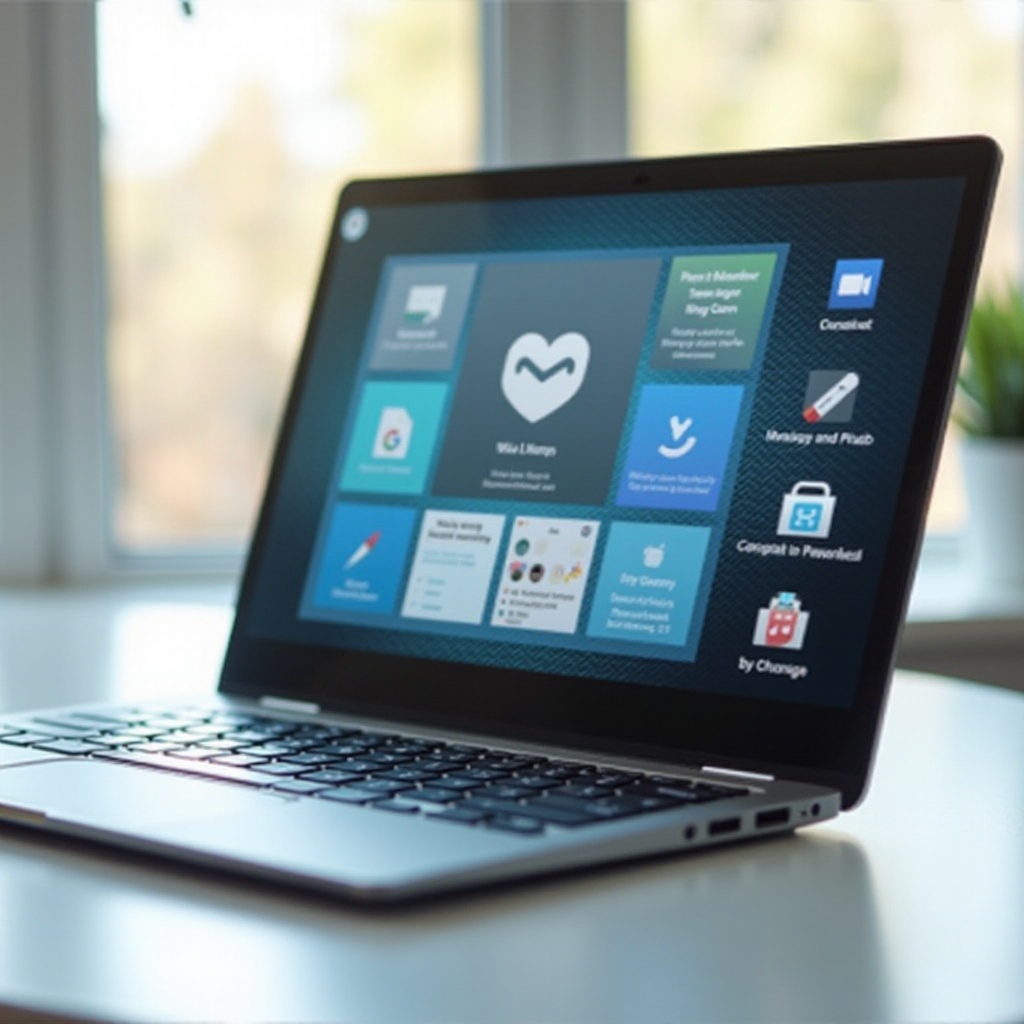Introduction
Chromebooks have grown in popularity due to their affordability and ease of use, making them excellent choices for students, professionals, and casual users alike. One feature that enhances the usability and efficiency of these devices is touchscreen capability. This comprehensive guide will walk you through the steps needed to enable and optimize the touchscreen on your Chromebook. By following these simple instructions, you’ll unlock a new dimension of interaction with your device, making it more versatile and user-friendly.

Why Enable Touchscreen on Your Chromebook?
A touchscreen can significantly boost the functionality and efficiency of a Chromebook. With a touchscreen, you can enjoy more intuitive navigation, easily pinch to zoom, and benefit from precise touch controls for drawing and note-taking. This is especially beneficial for users who frequently engage in graphic design, creative tasks, or presentations. Additionally, a touchscreen can make web browsing, playing games, and using various apps much more immersive and enjoyable.
Touchscreen functionality also enhances accessibility for users who might have difficulty using a traditional keyboard and mouse setup. It offers an alternative way for people to interact with their devices, making technology more inclusive and adaptive to different user needs.
However, before diving into the enabling process, it’s essential to determine whether your Chromebook is compatible with touchscreen functionality. This ensures a smooth and effective transition to a more interactive experience.

Checking Touchscreen Compatibility
Before you start, you need to verify if your Chromebook supports touchscreen functionality. Not all Chromebooks come with built-in touchscreen capabilities, so this step is crucial.
-
Research Your Chromebook Model:
Check the specifications of your Chromebook by looking up your model number. Most manufacturer websites provide detailed specifications, including whether the model supports touchscreen functionality. -
Visit System Information:
On your Chromebook, you can access hardware information to confirm touchscreen capabilities. PressCtrl + Alt + tto open the Crosh (Chrome OS Developer Shell). Typeshelland thensudo edit-chroot -allto view detailed hardware information. Look for any mention of touchscreen entries under input devices. -
Check Manufacturer’s Website:
Visit the manufacturer’s website with your model information handy. Manufacturer documentation often includes detailed information about the hardware capabilities of your device, including touchscreen support.
Once you have confirmed the compatibility, you’re ready to enable the touchscreen on your Chromebook.
Enabling Touchscreen on Chromebook
Enabling the touchscreen on your Chromebook involves a few simple steps. Depending on the specifics of your device, you can utilize system settings, Chrome OS flags, or enable developer mode.
Using Chromebook System Settings
-
Access System Settings:
Click on the system tray at the lower-right corner of your screen and select the gear-shaped icon to open the Settings menu. -
Navigate to Device Settings:
In the Settings menu, go to the ‘Device’ section and look for ‘Touchpad and Mouse’. Some models may have a ‘Touchscreen’ option listed here. -
Enable Touchscreen:
Toggle the touchscreen option to ‘On’. Your Chromebook should now respond to touch inputs if it supports this feature natively.
Utilizing Chrome OS Flags
For models where the touchscreen option is not readily visible in system settings:
-
Open Chrome Browser:
Launch the Chrome browser on your Chromebook. -
Access Chrome Flags:
In the browser address bar, typechrome://flagsand press Enter. This opens the experimental flags page. -
Search for Touchscreen:
Use the search bar on the flags page to find touchscreen-related options. Look for any flags related to ‘Touch Events’ or ‘Enable Touchscreen’. -
Enable Relevant Flags:
Enable these flags, then restart your Chromebook for the changes to take effect. This can activate the touchscreen functionality if the hardware is present.
Enabling Developer Mode
-
Enter Recovery Mode:
Hold theEsc + Refreshkeys and, while holding them, press the power button. Your Chromebook enters recovery mode. -
Enable Developer Mode:
PressCtrl + Dand then Enter to enable developer mode. Be aware that this process will wipe your Chromebook’s data, so back up any important files beforehand. -
Restart and Configure:
Once in developer mode, your Chromebook will restart. Follow the on-screen instructions to complete the setup. -
Access Additional Settings:
After enabling developer mode, you might find additional touchscreen settings available in the system settings or through Chrome Flags.
Optimizing Touchscreen Performance
After enabling the touchscreen on your Chromebook, there are ways to optimize its performance for the best experience:
-
Update Chrome OS:
Always ensure your Chromebook is running the latest version of Chrome OS, as updates often include performance enhancements and bug fixes. -
Calibrate the Touchscreen:
Some models may allow calibration through settings or a dedicated app. Calibration ensures that touch inputs are accurate and responsive. -
Clean Your Screen:
Regularly clean your Chromebook’s screen with a soft, lint-free cloth to prevent any dust or smudges that can affect touch responsiveness. -
Adjust Sensitivity Settings:
In the touchscreen settings, you can often adjust the touch sensitivity and other related options to match your usage preferences.
Essential Apps and Tools for Touchscreen Chromebooks
To make the most of your touchscreen Chromebook, consider downloading these essential apps and tools:
- Google Keep:
Perfect for note-taking with intuitive touch controls. - Squid:
A great tool for drawing and handwritten notes. - Adobe Illustrator Draw:
Ideal for graphic design and creative projects. - Infinite Painter:
Offers a rich set of features for sketching and painting. - Touchscreen Tester:
Allows you to diagnose and calibrate the touchscreen if needed.

Troubleshooting Common Touchscreen Issues
If you encounter issues with your Chromebook’s touchscreen, here are some troubleshooting steps:
-
Restart Your Chromebook:
Sometimes, a simple restart can resolve minor touchscreen issues. -
Check for Software Updates:
Ensure your OS and apps are updated to their latest versions. -
Remove External Devices:
Disconnect any external devices that may interfere with the touchscreen functionality. -
Powerwash Your Device:
As a last resort, perform a factory reset (Powerwash) to eliminate any software-related issues. Remember to back up your data first.
Conclusion
Enabling touchscreen functionality on your Chromebook can greatly enhance your overall user experience, making the device more versatile and functional. By following this guide, you can determine the compatibility of your Chromebook, enable the touchscreen, and optimize its performance for a seamless experience. Whether for productivity, creativity, or general everyday use, a touchscreen Chromebook opens up a world of possibilities.
Frequently Asked Questions
Can all Chromebooks be turned into touchscreen devices?
No, not all Chromebooks have the hardware to support touchscreen functionality. It’s essential to verify the specifications of your specific model before attempting to enable the touchscreen.
How can I improve the responsiveness of my Chromebook touchscreen?
To enhance touchscreen responsiveness: – Keep your OS and apps up to date. – Regularly clean the screen. – Use a touchscreen calibration tool if available.
Are there any risks associated with enabling Developer Mode for touchscreen?
Enabling Developer Mode can make your device more vulnerable to security risks and will void your warranty. It also requires a factory reset, which will delete all data on your Chromebook.